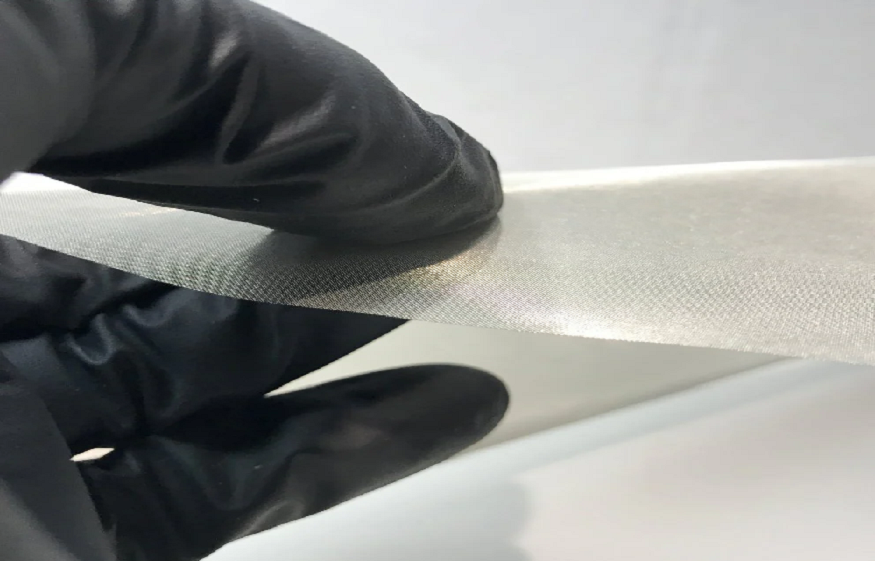
RF Shielding Film: Protecting Your Space from Electromagnetic Interference
In a world where electronic devices are deeply integrated into our daily lives, the issue of electromagnetic interference (EMI) has become a significant concern. RF shielding film is a powerful solution that effectively mitigates this problem by providing a barrier against electromagnetic waves. Whether it’s for residential, commercial, or industrial applications, RF shielding film serves as a practical, efficient means of protecting sensitive equipment from interference that can affect performance, safety, and data integrity. With advancements in technology, these films are becoming more accessible and versatile, offering a reliable option for those seeking to safeguard their spaces from the harmful effects of RF signals.
Understanding the Basics of RF Shielding Film
RF shielding film is designed to block or reduce the impact of electromagnetic radiation that can disrupt electronic devices and systems. This thin, transparent film is made from materials that are highly effective at reflecting or absorbing radio frequency (RF) signals. The primary function of RF shielding film is to provide protection for electronic devices, ensuring that they operate optimally without interference from external RF sources.
One of the key benefits of RF shielding film is its ability to block signals over a wide range of frequencies. These films are often constructed with conductive materials such as metals or conductive polymers, which allow them to absorb and redirect RF signals. The shielding effectiveness depends on factors such as the thickness of the film, the materials used, and the frequency range that needs to be protected. This makes RF shielding film highly customizable to meet the needs of various environments, from homes to highly sensitive industrial spaces.
Applications of RF Shielding Film in Various Environments
The applications of RF shielding film are vast, with industries ranging from healthcare to manufacturing benefiting from its protective qualities. In healthcare, for instance, medical facilities and hospitals use RF shielding film to protect sensitive equipment like MRI machines, pacemakers, and monitoring devices from RF interference. In such settings, even minor disruptions can compromise the performance of life-saving devices, so ensuring that the environment is free from external electromagnetic interference is crucial.
RF shielding film is also commonly used in data centers and telecommunication facilities, where the integrity of data transmission and storage is paramount. These spaces are often filled with equipment that is highly sensitive to RF signals, and any disturbance can result in data loss or signal degradation. By installing RF shielding film, these facilities can create a controlled environment where the equipment can perform at its highest level of efficiency.
Another significant application of RF shielding film is in residential settings. With the rise of smart homes and IoT devices, protecting one’s home from electromagnetic interference has become an essential concern. RF shielding film can be applied to windows, walls, and other surfaces to create a barrier that prevents external RF signals from entering the home. This is particularly useful in areas with high levels of RF pollution or in environments where privacy and security are important.
How RF Shielding Film Works to Protect Against Interference
RF shielding film works by creating a physical barrier that prevents electromagnetic waves from penetrating or radiating into the protected space. The materials used in the film, often a combination of metals and conductive polymers, work together to reflect, absorb, and dissipate RF energy. The efficiency of RF shielding is usually measured in terms of decibels (dB), indicating the degree of attenuation of the RF signals.
When RF signals encounter the shielding film, the film’s conductive properties cause the signals to be absorbed or reflected away from the surface. The more effective the film, the less interference will be transmitted to the protected area. This process significantly reduces the amount of RF noise that reaches sensitive devices, allowing them to operate without disruption.
One of the primary factors that determine the effectiveness of RF shielding film is its thickness. Thicker films tend to provide greater attenuation, but even thin layers can offer significant protection, especially when used in conjunction with other shielding techniques. Additionally, the frequency of the RF signals being blocked plays a crucial role in the choice of shielding film. For example, certain films are designed to block specific frequency ranges, making them ideal for targeted applications.
The Advantages of Using RF Shielding Film
RF shielding film offers a wide range of benefits for both individuals and businesses. One of the most significant advantages is its ability to protect electronic devices from interference without the need for bulky, expensive shielding equipment. The film can be easily applied to existing windows, walls, or surfaces, making it a cost-effective solution for improving the performance of sensitive devices.
In addition to providing protection from electromagnetic interference, RF shielding film also helps improve security and privacy. By blocking external signals, it can prevent eavesdropping, unauthorized data access, and other privacy concerns. This makes it particularly valuable in environments where confidentiality is essential, such as government buildings, research labs, and high-security facilities.
RF shielding film also contributes to reducing the potential health risks associated with prolonged exposure to electromagnetic radiation. While research on the health effects of RF radiation is ongoing, many individuals prefer to reduce their exposure as a precautionary measure. By installing RF shielding film in homes and workplaces, individuals can take a proactive step toward creating a safer environment for themselves and their families.
Finally, RF shielding film enhances the overall performance and reliability of electronic devices. By minimizing external interference, devices can operate with greater precision and stability, which is particularly important in industries where accuracy is critical. This includes sectors such as medical diagnostics, telecommunications, and defense, where even small amounts of interference can have significant consequences.
Future Trends in RF Shielding Film Technology
As technology continues to evolve, so too does the field of RF shielding film. Manufacturers are constantly researching new materials and methods for enhancing the effectiveness of shielding films. The future of RF shielding film technology promises even greater performance, with thinner, more transparent, and more flexible films being developed to meet the demands of modern applications.
Advancements in materials science are also expected to lead to more environmentally friendly and sustainable options for RF shielding. As industries move toward greener solutions, the development of biodegradable or recyclable shielding films will become increasingly important. This will not only reduce the environmental impact of shielding products but also open up new opportunities for eco-conscious consumers and businesses.
Furthermore, as the number of wireless devices and networks continues to increase, the demand for RF shielding will only grow. More industries will seek to implement RF shielding solutions to protect their equipment from interference, and RF shielding films will continue to play a key role in ensuring the reliability and safety of electronic systems across various sectors.
RF shielding film is an essential tool in today’s world, offering a practical and effective solution for protecting electronic devices and ensuring the smooth operation of sensitive equipment. With its versatility, ease of installation, and numerous benefits, RF shielding film is poised to become an even more integral part of modern infrastructure. Whether in homes, offices, or industrial settings, this technology will continue to play a vital role in safeguarding against the growing risks of electromagnetic interference.


